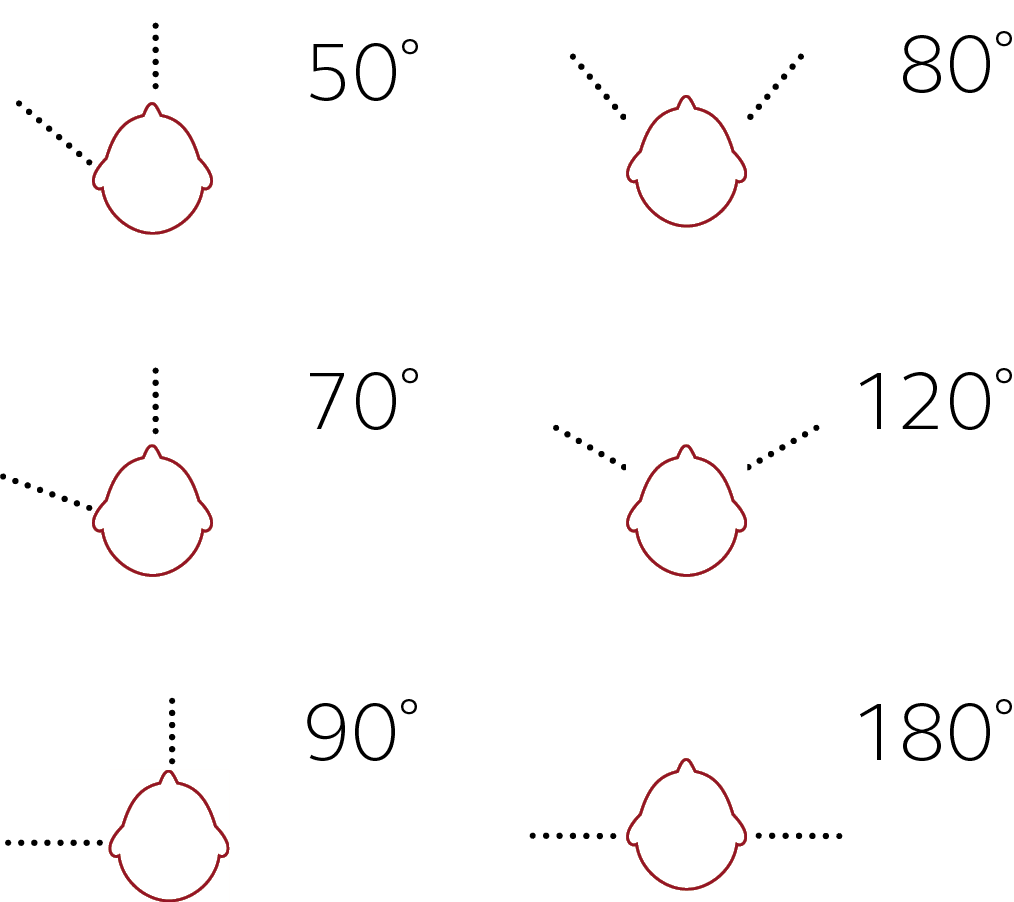Directional Sound Processing
RoleImproves SNR by reducing the amplification of sounds coming from behind the user.
End user benefit
Improves speech intelligibility in noisy situations.
Adaptive directionality also features classic wind noise reduction for devices without Wind Guard™.
Multiscope Directionality is an advanced form of Adaptive Directionality that allows the width of the directional beam to be set in the fitting software, in effect making the area of focus larger or smaller.
| MULTISCOPE DIRECTIONALITY SPECIFICATIONS | ||
| SETTING | MONAURAL FITTING APPROX. ANGLE OF FOCUS | BINAURAL FITTING APPROX. ANGLE OF FOCUS |
| Narrow |  |
|
| Medium | ||
| Wide | ||
Autoscope is an automated form of Multiscope where the beamwidth adjusts depending on the strength of the speech signal in front of the user.